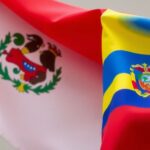Deadline: 26 January 2024
The National Energy Systems Modelling Call, delivered under Natural Resources Canada’s (NRCan) Energy Innovation Program (EIP), targets projects which quantitatively model the role of innovative technologies in achieving emissions reductions in the energy sector and its role within a net-zero emissions economy.
Energy systems modelling is a critical element of informed Canadian energy and climate action. It provides a quantitative framework to explore the potential role and impacts of different energy technologies on Canada’s energy future. Models provide important opportunities to “experiment” with how new technologies could accelerate the transition to net zero, as well as impacts on the larger energy system. However, the accelerating pace of technological change can make it a challenge to incorporate a full range of energy technologies into energy systems modelling activities.
This call for projects intends to provide support for energy modellers as they address these challenges and develop new insights on individual and combined energy technologies that could produce lowestcost pathways to net zero. Furthermore, this call seeks to encourage transparency in modelling projects (e.g., modelling code, input and output data) to expand opportunities to compare results and better understand the impacts of different assumptions and methodologies.
Focus Areas
The National Energy Systems Modelling Call aims to support public discussion and action on clean energy and climate change by:
- Improving societal understanding of the energy system: Energy modelling projects can help improve the understanding of the energy system, including how different technologies might impact energy supply, demand, and prices. Energy modelling can help identify key challenges and opportunities related to energy technology innovation as part of the energy transition.
- Enhanced decision-making: Modelling provides an opportunity to explore possible outcomes and futures. Modelling also requires explicit assumptions regarding the future and produces consistent outcomes, which is key to an evidence-based approach.
- Transparency and accessibility: Investment in the Canadian public modelling landscape will improve access to, and the transparency of the key tools required to participate meaningfully in Canadian energy discussions. Insight into modellers’ data collection and calibration processes will spur constructive conversation around user assumptions and uncertainty.
- Representation of new technologies: Models should be updated to represent the latest developments in energy technology. Energy modelling can be used to explore technological gaps, but the initial representation of the technology in an up-to-date model is key to determining its long-term impacts.
- Improved evidence base: A robust, transparent ecosystem of models and practitioners serves to grow the evidence base around energy technologies, which is critical given the breadth of the energy transition challenge ahead.
Funding Information
- The National Energy Systems Modelling Call is open to projects that request a minimum of $100,000 over a period of up to 3 years, up to a maximum contribution of $1 million. The EIP provides nonrepayable contributions.
- Level of Funding
- Up to $1,000,000
- Provided for model R&D or modelling exercises with the following conditions:
- all input (i.e., dataset) and output data is made publicly available so that the project can be replicated
- all modelling code, interfaces, and resources are made publicly available
- Provided for model R&D or modelling exercises with the following conditions:
- Up to $750,000
- Provided for model R&D or modelling exercises with the following conditions:
- some input data (however, all technology parameter input data must be made available), all output data, and all modelling code are made publicly available, so that the project can be replicated using the same model if open source, or another model if not.
- preference will be given to models/modelling systems and datasets which follow open-source principles
- Provided for model R&D or modelling exercises with the following conditions:
- Up to $500,000
- Provided for model R&D or modelling exercises with the following conditions:
- all output data is made publicly available
- Provided for model R&D or modelling exercises with the following conditions:
- Up to $1,000,000
Eligible Projects
- Quantitative modelling of Canada’s energy system at a national level
- The National Energy Systems Modelling Call is open to projects which conduct quantitative modelling (e.g., simulation, optimization) of Canada’s energy system at a national level, showing trajectories to net zero and how these are/could be affected by technological innovation.
- Projects may focus on specific aspects of the energy system (e.g., buildings, electricity, industrial subsector) but must produce national, economy-wide GHG and energy results to demonstrate consistency with net zero.
- The Call is designed to provide RD&D support to energy modellers focussed on technology in Canada. This Call funds both modelling exercises as well as model development.
- Inclusivity, equity, diversity, and accessibility
- Project governance and operations plan
- NRCan recognizes the importance of a diverse and inclusive workforce to the resilience of Canada’s economy and for the benefit of Canadian society. To support a diverse and inclusive energy technology sector, applicants will be required, as part of their EOI application, to indicate whether their organization has an Equity, Diversity, and Inclusion (EDI) Plan and, if so, what this plan entails. Applicants will also be asked if their organization has signed on to public equity and diversity initiatives such as Equal by 30.
- While this information will not be evaluated, it may inform NRCan’s efforts to select a balanced portfolio of projects across the country. This information may also be used by NRCan to track progress on increasing workforce diversity and to inform future program and policy development. Successful applicants will be asked to continue reporting on progress toward EDI in their organization through annual reporting during project funding and thereafter.
- Project governance and operations plan
Eligibility Criteria
- Eligible Canadian Recipients will be:
- Legal entities validly incorporated or registered in Canada including:
- For profit and not for profit organizations;
- Community groups; and
- Canadian academic institutions.
- Legal entities validly incorporated or registered in Canada including:
- Provincial, territorial, regional and municipal governments and their departments and agencies where applicable.
- Indigenous:
- Indigenous communities or governments
- Tribal Councils or entities that fulfill a similar function (e.g., general council)
- National and regional Indigenous councils, and tribal organizations
- Indigenous (majority owned and controlled by Indigenous people) for-profit and not-forprofit organizations
- For the purposes of this Applicant’s Guide, the term “Indigenous” is understood to include
- Inuit, Metis, First Nation, Status Indian and non-Status Indian individuals, or any combination thereof.
For more information, visit Government of Canada.


























